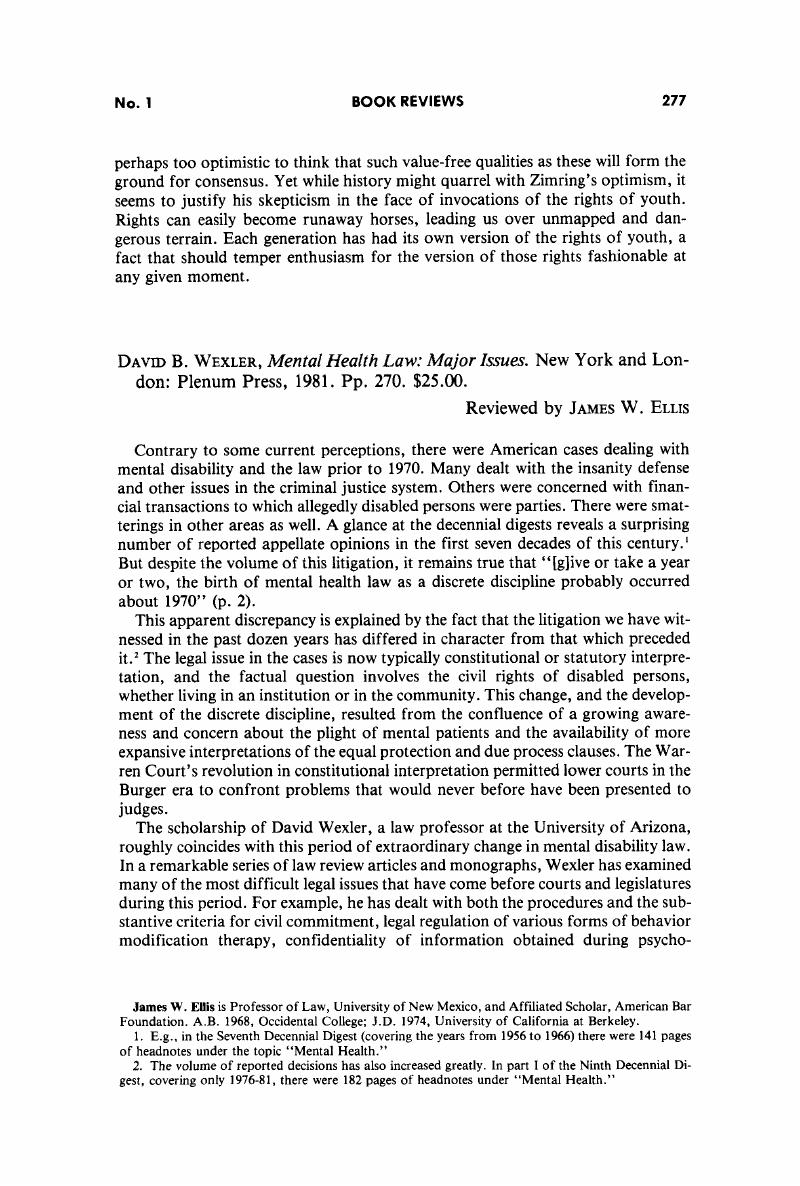No CrossRef data available.
Published online by Cambridge University Press: 20 November 2018

1. E.g., in the Seventh Decennial Digest (covering the years from 1956 to 1966) there were 141 pages of headnotes under the topic “Mental Health.”.Google Scholar
2. The volume of reported decisions has also increased greatly. In part I of the Ninth Decennial Digest, covering only 1976–81, there were 182 pages of headnotes under “Mental Health.”.Google Scholar
3. Some courts may even have cited Wexler's work without understanding it fully. See Addington v. Texas, 441 U.S. 418,431 (1979), citing Monahan, John, & Wexler, David B., A Definite Maybe: Proof and Probability in Civil Commitment, 2 Law & Hum. Behav. 37 (1978).Google Scholar
4. Addington v. Texas, 441 U.S. 418 (1979).Google Scholar
5. Wexler refers to it as a “quasi-treatise” (p. 3).Google Scholar
6. Pp. 71–113. This is a substantially abridged version of Wexler, David B., Scoville, Stanley E., et al., The Administration of Psychiatric Justice: Theory and Practice in Arizona, 13 Ariz. L. Rev. 1 (1971). The author's most recent discussion of civil commitment is Wexler, David B., The Structure of Civil Commitment: Patterns, Pressures, and Interactions in Mental Health Legislation, 7 Law & Hum. Behav. 1 (1983).Google Scholar
7. This reviewer would recommend, in addition to Wexler's book, the American Psychiatric Association's Diagnostic and Statistical Manual (III); the American Association on Mental Deficiency's most recent Manual on Terminology and Classification in Mental Retardation; Samuel J. Brakel & Ronald S. Rock, eds., The Mentally Disabled and the Law (rev. ed. Chicago: University of Chicago Press, 1971) (new edition in preparation at the American Bar Foundation); Michael Kindred, Julius Cohen, David Penrod, & Thomas Shaffer, eds., The Mentally Retarded Citizen and the Law (New York: Free Press, 1976); and a complete set of back issues of the Mental Disability Law Reporter (Washington, D.C.: Mental Disability Resource Center of the Commission on the Mentally Disabled, American Bar Association).Google Scholar